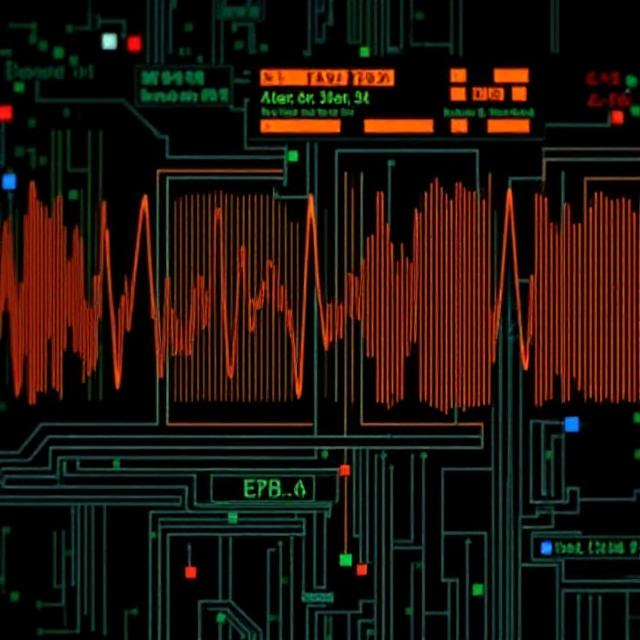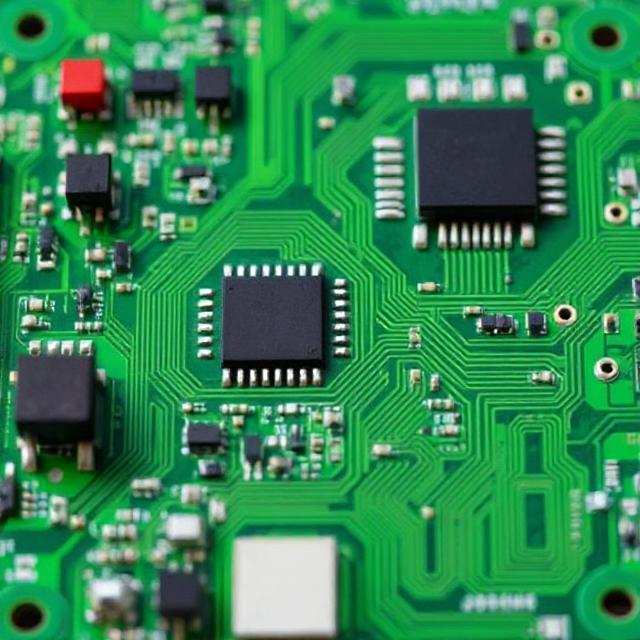What Are Synchronous and Asynchronous Circuits?
Both synchronous and asynchronous circuits are types of digital circuits that process signals and data. The key difference between them lies in how they synchronize their operations. Let’s break down these concepts.

1. Synchronous Circuits:
A synchronous circuit operates based on a clock signal. The clock acts like a metronome that controls the timing of all operations in the circuit.
- Clock Signal: The clock signal is a periodic square wave (it goes up and down regularly) that provides a common timing reference for all parts of the circuit.
- How it works:
- In a synchronous circuit, every operation or change in the circuit happens at a specific time, determined by the clock.
- All the components in the circuit (like flip-flops, registers, etc.) “listen” for the clock signal. When the clock ticks (changes from low to high or high to low), the circuit components take action (like updating values, moving data, etc.).
- Example:
- A clocked flip-flop (a basic memory element) stores a bit of data when the clock signal ticks.
- In a synchronous counter, the counting process is controlled by the clock — each clock tick increments the count by 1.
- Advantages:
- Predictability: Since everything happens in sync with the clock, it’s easier to design and troubleshoot.
- Stable Timing: You can ensure that every part of the circuit operates at the correct time, without conflicts.
- Disadvantages:
- Speed Limitations: The performance is limited by the speed of the clock. All parts of the circuit must be fast enough to keep up with the clock.
- Complexity with Long Chains: As circuits get larger and more complex, it can be harder to manage long delays between components.
2. Asynchronous Circuits:
An asynchronous circuit doesn’t use a clock signal. Instead, the components in the circuit operate based on their own timing and respond directly to inputs.
- No Clock Signal: In an asynchronous circuit, components are not controlled by a central clock. Instead, each part of the circuit changes based on the input it receives from other parts of the circuit.
- How it works:
- Asynchronous circuits rely on the timing of signals and events, and each operation happens as soon as the required conditions are met. For example, when a flip-flop receives a signal, it changes its state immediately, without waiting for a clock tick.
- Since there’s no clock, the system operates based on the flow of data and signals.
- Example:
- A simple asynchronous counter increments the count as soon as the previous value is ready, without waiting for a clock.
- A pulse generator might produce an output when it detects a specific event, like pressing a button, without relying on a clock.
- Advantages:
- Speed: Since the circuit doesn’t need to wait for a clock, the operation can be faster in certain cases.
- Efficiency: Can be more power-efficient because components only operate when needed, rather than constantly running with a clock.
- Disadvantages:
- Timing Issues: Without a clock, timing can become harder to control. Different parts of the circuit may get out of sync, causing errors or glitches.
- Complex Design: Asynchronous circuits are often harder to design and debug because you don’t have the predictability of a clock signal.
Key Differences Between Synchronous and Asynchronous Circuits:
| Feature | Synchronous Circuit | Asynchronous Circuit |
|---|---|---|
| Clock Signal | Requires a clock signal for synchronization. | No clock signal, operates based on input events. |
| Timing | All operations happen in sync with the clock. | Operations happen as soon as inputs change. |
| Speed | Limited by the clock speed. | Can be faster in some cases. |
| Design Complexity | Easier to design and debug. | More complex to design and debug. |
| Synchronization | More predictable and stable. | Risk of timing problems (glitches). |
| Power Consumption | Can use more power, as the circuit is always “active” based on the clock. | Potentially more power-efficient. |
| Usage | Used in most digital systems, like processors and memory. | Used in specialized circuits where speed or efficiency is key. |
Examples:
- Synchronous Circuits:
- Clocked flip-flops in a register or memory unit.
- Synchronous counters that count pulses in a defined order.
- Microprocessors, where all operations are coordinated by the system clock.
- Asynchronous Circuits:
- Asynchronous counters that increment based on input without a clock.
- Edge-triggered devices that respond to changes in input without waiting for a clock.
- Communication protocols like I2C and SPI can sometimes work asynchronously in certain configurations.
Summary:
- Synchronous Circuits use a clock to synchronize the operation of all parts of the circuit. They are predictable, stable, and easy to design but can be limited by the clock speed.
- Asynchronous Circuits operate based on input events and do not rely on a clock. They can be faster and more efficient in some cases but are harder to design and can have timing issues.
In simple terms, think of synchronous circuits like a team following a schedule (everything happens in sync with a clock), while asynchronous circuits are like a team responding to signals as soon as they get them (no clock, they react when needed).
Keywords: Asynchronous, Synchronous, Circuits, Electronics
Keywords: Asynchronous, Synchronous, Circuits, Electronics











